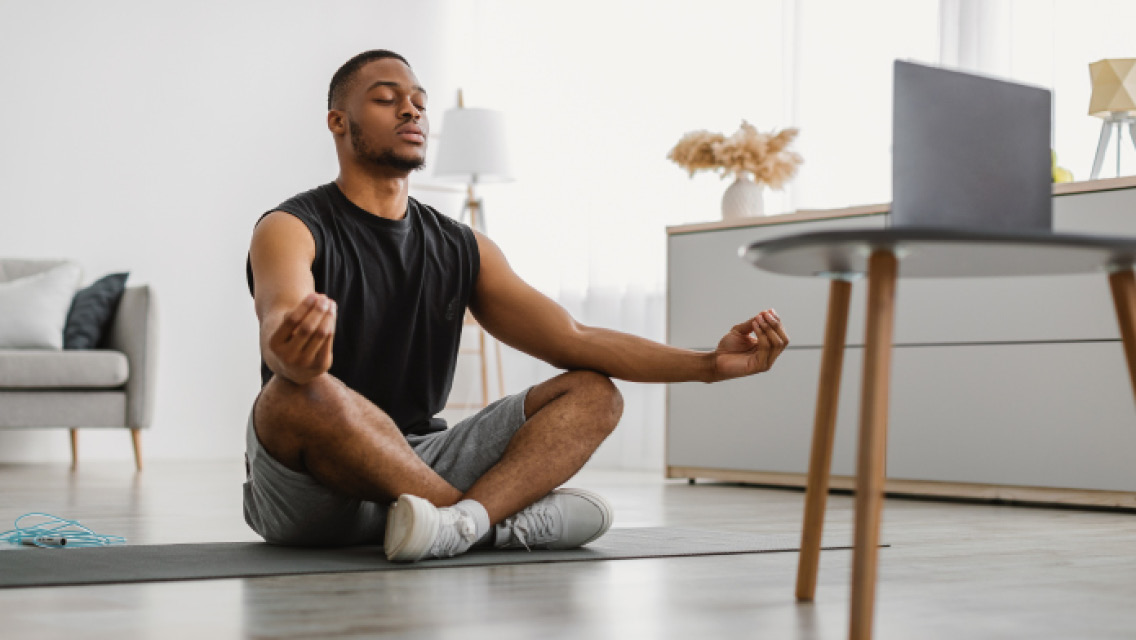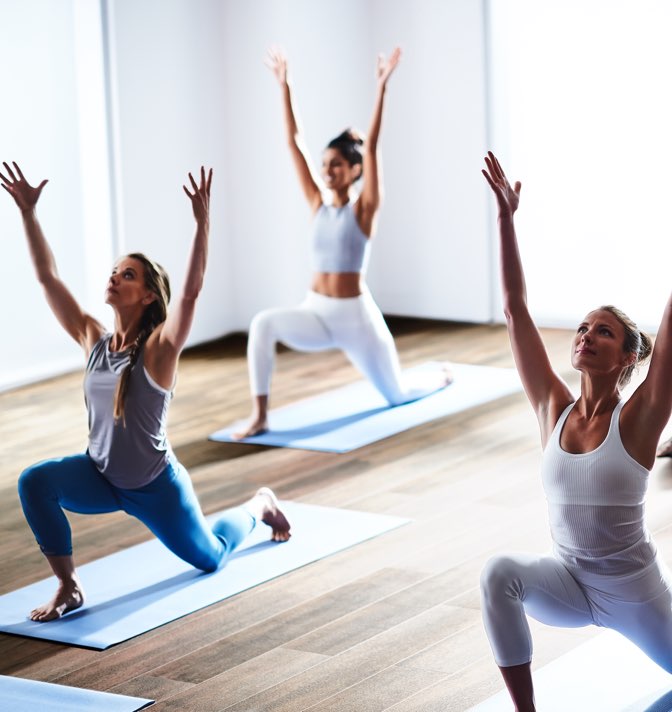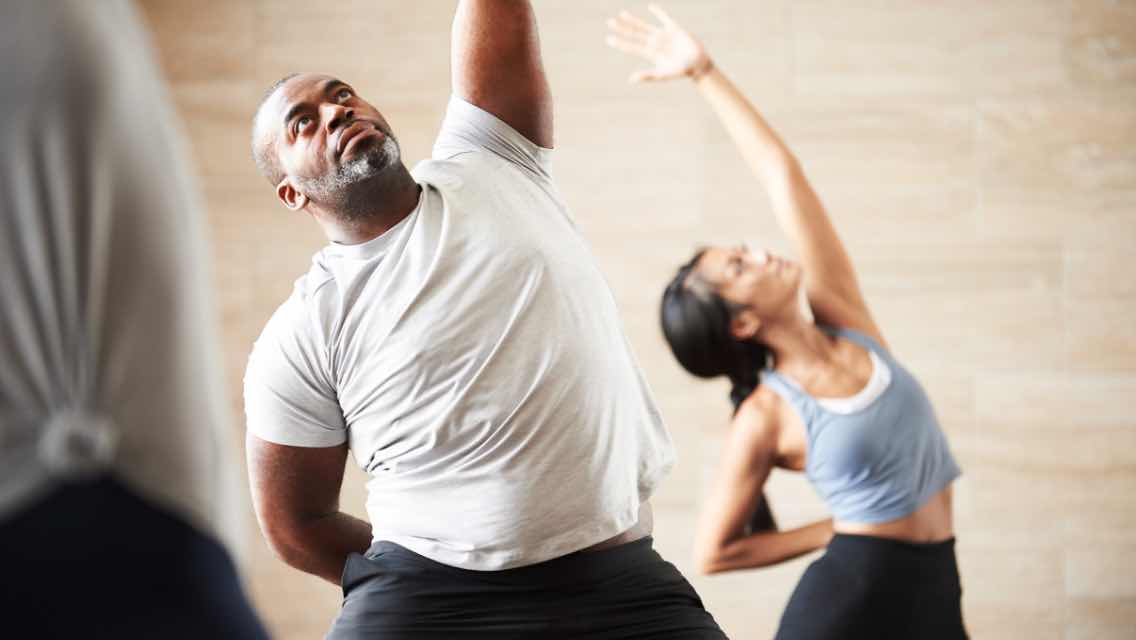I had been a runner for eight years when I realized my once-supple body seemed to be curling in on itself. My hips, in particular, were closing up like a clam shell, throwing off my gait and hampering my performance. My first instinct was to return to the ballet lessons from my youth — an activity that demanded flexibility. But it didn’t take long before I discovered flexibility could not be demanded, especially from someone in her 30s.
Instead, I tried yoga. Ally David, an Iyengar yoga instructor in Dallas, guided my stiff limbs into poses that awakened dormant tissue; she discouraged competition among classmates (a refreshing change) and introduced me to meditative and visualization techniques that connected my brain with my body.
When I left that first class I felt as if I had just walked away from a massage: loose, restored and relaxed. But there was something else going on. I felt carefree, content and — dare I say — even loved? Suffice it to say, what I got out of yoga was a lot more than a good stretch.
Yoga’s applications to sport are influencing all levels of athletes. Adrienne Reed, an award-winning yoga instructor who hosts Power Yoga: Mind and Body on PBS, has made yogis out of golfers, runners, cyclists, swimmers, gymnasts, and tennis, volleyball, baseball and hockey players. “After practicing yoga, athletes have a reduction in injuries and improved stamina,” Reed says. “Plus, they tell me they’re lighter on their feet and feel more relaxed during games.”
Here are five ways yoga can improve your game, too.
1. Yoga makes you more flexible.
This one’s a gimme, considering the prospect of increasing flexibility is often what attracts athletes to yoga in the first place. And for good reason: A general, ongoing stretching routine that also includes a yoga practice pays off with a decrease in injuries, and improves performance by increasing force and speed. Flexibility also improves range of motion. This allows a tennis player to follow through on his serve or a rock climber to reach for the best hand hold. (For more on the value of flexibility, see “Stretch and Reach: The Unexaggerated Truth About Stretching”.)
2. Yoga makes you stronger in places you didn’t know were weak.
Yogic strength gains come from mastering your own body weight. “You’d be surprised how many seemingly strong people can’t hold their own leg up,” says Reed.
While holding a limb in the air requires strength, the grounded limb also works by engaging weaker musculature. “Yoga helps muscles on either side of the joint work more synergistically, as opposed to one being more dominant,” says Katy Santiago, MS, a yoga instructor in Ventura, Calif., who focuses on restorative exercise. This strengthening of small stabilizing muscles can prevent overuse injuries and alignment issues that occur when a dominant muscle does all the work.
Holding yoga poses correctly also requires you to know how each body part stacks up in space. Becoming familiar with the weight and feel of those body parts when you move and react to external stimuli is the basis of good proprioception, which helps you control your body the way you want to — on the mat or the playing field.
3. Yoga builds a superhighway between your brain and body.
“In yoga, there is a focus on musculoskeletal detail,” Santiago says. “That focus on subtlety allows the brain and body to better connect.” She suggests this increased awareness of self allows the brain to integrate more muscles.
For instance, athletes typically have strong abdominal muscles, but they often can’t access that strength. Since yoga teaches you how to engage these core muscles, it can reduce the work the rest of the body has to do, explains Reed.
Hitting a volleyball calls for a lot of shoulder and arm strength, for example, but putting the core to work will provide more power for getting the ball over the net, and allows the arms and shoulders to stay fresh for the duration of the game.
4. Yoga teaches you to make your breath a conscious part of living.
Breathing is something we take for granted, but breath is very intentional in yoga. “Breath and body work together,” Reed says.
Think of yourself as a balloon. When you breathe in (or, in this case, blow air into the balloon) it becomes taught and less pliable. Once you exhale (or let air out of the balloon), it becomes easier to bend. “Instead of shoving your body into a pose, your breath allows you to ease into it,” she explains.
The breath also helps an athlete relax and focus, she adds. “When you breathe slowly, even in high-anxiety moments, you can slow down your anxiety as well.”
5. Yoga reintroduces you to yourself.
Yoga is the calm in a competitive storm; it’s an activity that doesn’t ask “110 percent” or demand physical perfection. This feels indulgent for some athletes — especially those who can’t shake the urge to “out-stretch” people next to them. But there are no comparisons in yoga, not with the other people on their mats, or even with how you practiced the day before.
“You can work on improving without the burden of someone evaluating your performance,” Santiago says. “It’s just about you making a choice to be well for that day.”
Reed concurs: “You can focus on all the aspects of yourself — physical, mental and spiritual — in one place.”
Enlightened Athletes
There are many tangible benefits to be gained from practicing yoga, but accessing that unity between the physical, mental and spiritual is one that might help athletes the most.
“People talk about getting in ‘the zone’ and having the performance of their life, but no one can explain what ‘the zone’ is,” Reed says. “Athletes can be in top shape physically, but the mind must be focused and the athlete must be in the now. It has to be all of the above.”
Finding Yoga
Yoga is an art form developed thousands of years ago to unite body, mind and spirit, and it has since branched off into many different styles. There are vigorous types of yoga, such as ashtanga and bikram, or those focused on restoration, such as hatha and iyengar.
“There are so many styles and teachers within styles, you can’t just say, ‘I tried yoga once and didn’t like it,’” says Tampa-based yoga instructor Adrienne Reed. She recommends exploring classes and instructors until you find one who resonates with you and makes you feel good when you leave. “When you do, it’s magic,” she adds.
This article originally appeared as “Performance Yoga” in the July/August 2008 issue of Experience Life.





This Post Has 0 Comments